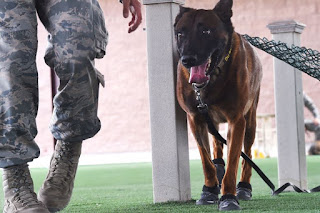(U.S. Air Force photo by Airman 1st Class Adarius Petty)
Do We See Dogs as We See Other Humans?
to people’s faces. We do the same with dogs. We have no trouble distinguishing the neighbor’s dog from a dog we’ve never seen before, and it’s a crucial aspect of our relationship with dogs that we respond to them as
individuals instead of as a category of creatures.
EVAN AND MONICA have a story of how they met, but it’s really a story of how Monica met Hudson, Evan’s dog.
Monica had seen the gorgeous Samoyed several times while she was walking near the beach in Santa Monica. She’d never paid much attention to Hudson’s owner, but she kept noticing the distinctive white dog.
One day she was sitting by herself outside a coffee shop, lamenting that she had lost her keys and didn’t know how she was going to get back into her apartment.
And then Hudson ambled up beside her and wagged his tail. Monica smiled at the dog and reached out to pet him. For the first time, she noticed his handsome owner.
They struck up a conversation in which Monica said she had noticed Evan’s beautiful dog many times and Evan said he had noticed Monica.
Phone numbers were traded, and a relationship began, and as Monica says, “It all started because I felt like I knew Hudson.”
The same part of the brain is activated when we see a human face as when we see a dog. (Blonder et al. 2004)







No comments